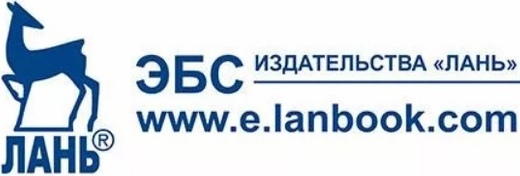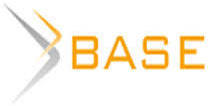DIAGNOSING THE PROBLEMS ASSOCIATED WITH STAFF MOTIVATION
Abstract
The article covers the problems associated with staff motivation. The study with the method of survey allows to determine the quantitative level of motivation of the personnel in the organization through a motivating potential score, as well as to conduct a factor analysis of motivation using the method of J.R. Hackman and R. Oldham. The comparison of the estimated parameters of importance, autonomy, diversity, completeness and feedback of the work with the base values enabled to identify the major problems of low staff motivation. It is shown that the low level of feedback and the importance of the work affect the psychological climate in the organization and reduces the level of trust demonstrated by employees towards management.INTRODUCTION
Motivation of staff is the principal means of ensuring optimal use of human resources, the mobilization of existing personnel. The main objective of the process of motivation is getting the most from the use of human resources available, which improves the efficiency of the enterprise activity.
MAIN PART
The aim of this study was to identify the main problems of nonmaterial motivation of staff in the organization and identify the ways to address them.
The object of the study was the public utility company "Teplovodoservis". The study was conducted using the method of survey. The scientific basis of the survey was the method developed in 2004 by I. P. Ponomarev in his study ‘Work engagement in an organization" [1]. It is an adapted and expanded method of the diagnostic analysis based on "Job characteristic theory" by Greg R. Oldham and J. Richard Hackman [2].
The survey was attended by 50 people. The necessary representativeness of the sample was provided by means of different demographic characteristics of the respondents, as well as the inclusion of workers and specialists, representatives of the main part of the company into the group.
The survey included five blocks of questions.
The first block was called "The work contents" and was intended to identify the perception of job contents factors by the employee.
The second block is "Working conditions", it was aimed at identifying the dissatisfaction of employee working conditions.
The third block was called "Job selection". This survey was intended to identify and assess the needs of the growth of the employee. Employees were asked to choose one of two jobs based on its quality characteristic using a fivepoint grading system.
The fourth block was called “General information”. It was intended to collect some data on workers, that was sociodemographic and professional information: gender, age, education, occupation, experience in the organization and work experience at this position.
The fifth block "Your attitude towards your job" was offered to employees to mark the most appropriate response that reflects the attitude towards the work in general, the work as an activity, and the work specific to an organization.
The definition of average motivation criteria
An average score was calculated on the basis of the survey points. This score was used as the basis for the factor analysis of motivation using the following formulas (Table 1).
1. Motivating potential score (MPS). When a job has a high score on the five core characteristic, it is likely to generate three psychological states, which can lead to positive work outcomes, such as high internal work motivation, high satisfaction with the work, high quality work performance, and low absenteeism and turnover. This tendency for high levels of job characteristics to lead to positive outcomes can be formulated by the motivating potential score (MPS). Hackman and Oldham explained that the MPS is an index of the “degree to which a job has an overall high standing on the person's degree of motivation...and, therefore, is likely to prompt favorable personal and work outcomes” [4]. MPS is calculated using five core dimensions: skill variety, task identity, task significance, autonomy, job feedback, as follows:

When present, those five core dimensions will lead to threepsychological states:
а) The level of activation by job (LAJ) shows how the work affects an employee, causing the need to act, to make decisions, to be «generally worthwhile, valuable or important by some system of values he or she finds acceptable. » [3] Using the five characteristics: complexity, surprise, novelty, uncertainty and conflict, we can measure the level of activation by job. The first measures the ability of the employee to perform the work, the second and the third is his/ her willingness to implement it, and the fourth and the fifth are the position of the employee or his/ her personal contribution to the work.

b) Job impact indicator (JII) is to indicate how the employee works closely with the job, adapted to the work or influence the content of the work, where a worker is accountable for the results of the work done. We can measure a Job impact indicator (JII) by the following characteristics: Goal acceptance, workflow improvement, learning during work, satisfaction with the result (wtr), motivation by the result (btr).

c) Degree of workers’ knowledge to perform work (DWK) - shows the ability of employee to perform his/ her job and achieve the desired result. The DWK involves: mastering work making process, troubleshooting, performance easiness and mastering the beginning and ending of the work.

2. Determining the conditions contributing to the motivation of the work
a. Work conditions satisfaction (WCF): this criteria is based on the assumption that the employee’s work conditions satisfaction consists of three relatively independent components - the states of satisfaction.
- Work satisfaction - workspace conditions and salary
- Management satisfaction - managing style and active rule
- Environment satisfaction - workspace climate and equipment status

- Proactive behavior - finding opportunities during work and action independence
- Skills implementation - developing skills and using abilities at work
- Challenge acceptance - process of aiming focus on the important decisions and the choice of the competitive environment (COE)

b. Work attitude (WA): this index calculation is based on three independent employee’s work relations and attitudes: actions, activities, specific job status.
WA = Workactivitiesattitude × Workprocessattitude × Specificjobattitude
To calculate the values of the factors of the motivation we will use formulas and previously calculated averages. The results are shown in Table 1:

The comparison of obtained results with normative and analysis of results
The overall results of the study of the effect of employment on the employee's motivation has shown that workers have a low level of work engagement.
First of all we can note the low value of the MPS in comparison with the one recommended by Greg R. Oldham and J. Richard Hackman. In the rate tables, the value of this indicator for professionals (nonmanaging staff) is 150 points.
The moderate motivating potential score (MPS) of work is 102,9. It shows that the staff demonstrates a lack of interest in job contents and has a low work motivation. The value of this score can also be explained by the workflow design at the enterprise connected with a high level of specialization and the absence of visible and measurable results.
- The degree of diversity of the work (5,01) indicates the use of employee knowledge and skills, but could use more variety
- Feedback about the results of their work (5,08) doesn't have a very high value, the employee may evaluate the result, but the quality of information can be improved.
- Feeling the importance of one’s work (4,75) is close to the desired level, but the employee does not clearly understand the impact his work has on other people.
- The measure of autonomy in the work (4,95) shows a lack of independence in the work, the worker lacks the feeling of personal responsibility for the result.
- Low level of activation by job (LAJ) (56,34) shows that its content is quite simple, with clear goals, does not require initiative on the part of the employee. Employees, in their turn, are not accustomed to the fact that the work causes them to act, to make decisions:
the level of novelty in the work (3,95) suggests that job content should be updated periodically and indicates the need to adapt changes;
the degree of uncertainty in the work (2,95) is more characterized as regulated, where the employee rarely have to resolve uncertainty;
the level of conflict in the work (2,58) shows that the role of the employee for performing work is performed without contradictions and doubts in the correctness of the execution;
perception of the complexity of the work (4,30) suggests that the work is rather complicated, requires preparation and attention on the part of the employee;
the level of surprise in the work (5,51) characterizes the work as less likely to be plannable, with a high degree of probability of the unforeseen events and disasters, mainly accidents on production.
- The low level of Job impact indicator (JII) (133,0) shows the evidence that the work at “Teplovodoservis” and its content is inherently not influenced by any employee. There are no significant changes in job content and the weak development of the skills of the employee in the process of doing the work is present. You can note the predominance of purely functional approach - there is work and it must be done.
the degree of acceptability of the target (5,09) shows that the objectives of the work does not meet the personal goals of the employee and do not meet all requirements;
score improvements (5.36) characterize the ability of the employee to influence the process of the work and its content;
the index of the instruction in progress (5,63) shows the interest of the employee to work and the development of an employee during his career progression;
the degree of satisfaction from the results (5,51) shows the involvement of the employee in the work, expression of interest, the presence of positive reaction to the result;
setting new goals after achieving results (4,01) characterizes the work as the part of the overall work, but the work is not meant to be something greater.
- The low level of degree of workers’ knowledge to perform work (DWK) (94,08) indicates the lack of ability to perform work efficiently, on time and with minimum effort, to get the planned result. When the person is employed he/ she never learns the rules, techniques, ways of doing the work and overcome possible obstacles and challenges:
− the degree of ownership begin (5,71) is at a high level, which indicates the attention of workers to the preliminary stage of the work;
− the indicator of ownership of the work (5,13) shows the ability of the employee to do their job, and ensure the process of its implementation;
− the degree of bringing the work to the (5,79) shows that workers, most of them, work for the result;
− but at the same time the indicator of solved during work process problems (3,41) characterizes workers as being able to cope with only a small and moderate problems in their work;
− the degree of ease of performance (4,98) shows that the process of executing the work to the worker seems rather easy and does not cause great difficulties.
- Speaking of motivation by job contents, you can imagine the picture of the interaction of the worker and work at "Teplovodoservis": the average employee of a modern business organization values not enough the perception of the motivational potential of their work. Work, in turn, does not require the employee manifestations of the activity and initiative. The situation is complemented by minor changes in the content of work by an employee, weak adaptability to work process and low possession of the work, the ability to obtain the result.
We consider the value of indicators of conditions next. For a complete presentation of the motivation for the work it is necessary to emphasize the importance of factors that reveal the satisfaction of the employee's conditions of employment, demand growth, level of education and attitude to work.
- Work conditions satisfaction (WCF) is at a very low (89,81) level and indicates the operating conditions of the sources of dissatisfaction, which could have a negative impact on the perception of the content:
satisfaction with the immediate work environment - 4,15 - indicates a neutral attitude to the work environment. The absence of dissatisfaction shows that working conditions do not prevent the occurrence of motivation from the work;
satisfaction with the level of salary, or 4.31 - was at its lowest level. The salary level is a significant source of dissatisfaction of employees and may hinder the perception of the content of the work;
satisfaction with rules and regulations in organization - 4,29 indicates the presence of a small dissatisfaction with the rules and regulations that does not, however, contribute to the perception of work factors and motivation to work;
satisfaction with leadership style - 4,66 - was on a neutral level. Relationship with manager does not create obstacles for motivation, job content, but do not contributes to it;
satisfaction with the relations between people in the organization - 5,19 - was at the highest level of work conditions. Satisfaction with relationships with colleagues creates conditions for the emergence of motivation work;
satisfaction with the status and capabilities of the equipment or 4.31 shows that the equipment makes the work of some dissatisfaction, which does not contribute to the perception of the content.
- Growth Need Strength (GNS) (70,49) at the base rate of 94,00 is not well formed. A low value indicates that the majority of workers remain relevant to the needs of existence and social needs. Perhaps there is also an organisational reason for the lack of implementation mechanisms and the needs of the growth are met of the employee directly in the process that prevents the development of this need:
- - 2.80. Work is still considered just as a source of income. Creativity and initiative at work do not allow to improve the process of its execution, and if it is allowed to get the best result, the employee has no support from the leadership of the organization and this is not reflected in the salary.
- - 3,2. Teamwork and good people resources can meet the need of communication, which for the average worker is more important than to make important decisions, to grow professionally. This means that workers are not enough to satisfy their need of connection;
- - 2.21. Best work, in the view of the majority of workers will ensure the achievement of their own goals and is more prefferable than to showing any loyalty to the organization. This can be explained rather by some distrust of the leadership of the organization and the difference in opinions than a desire for greater independence;
- - 2.9. The availability of free time and benefits at the work is more relevant, and the development of skills and career growth for the employee contributes to the achievement of its objectives;
- - 3.4. With this choice, the employee does not see the implementation of their knowledge and skills ability to meet their needs, and work in very good team seems to him more attractive to meet the needs of communication;
- - 3,42. Competitive environment, according to the employee, creates more obstacles for achieving the objectives than any opportunities, so that the workers prefer just to interact more with other workers.
- Work attitude (WA) - 80,22 at the base rate of 101 shows that workers see work as something forced, heavy and why if there is any possibility it is better for them to refuse and find another occupation. Such attitude, as a rule, is based on the education and personal experience. One of the tasks of management of the organization is to create a positive attitude to work process and to "grow" the people creating the consumer requested product. - in the perception of work as a process (4.40) about 40% of the employees said that the work can be interesting and enjoyable, and it is known that many experience the work as a challenge, a test. The obligatory presence of difficulties and dissatisfaction in the work process is noted by 21% of employees;
general perception of the work showed that main motivation for an employee of “Teplovodoservis” is, not surprisingly, monetary gain (though that this need is satisfied the least). For 21% of employees the job is the opportunity to spend time in the team, to 16% - a means to implement their ideas and opportunities. In the end, the overall perception of work - 4.29 points;
47% of workers are identifying themselves by the means of a specific task (4,25) performed by the organization, and almost as many workers express only a formal interest in the content of their work and, if possible, would find a more interesting job.
The general conclusion related to the workers and working conditions is the following: the average employee of "Teplovodoservis" is experiencing some dissatisfaction with the working conditions and do not perceive himself as a source of product and existence of the organization; the employee perceives the work as a means to satisfy their needs of existence and communication, formed attitude, level of education of respondents is not sufficient to change this situation.Generalized image comparing the factors of motivation with the rules of R. Hackman are present on figure 1.

Figure 1. Comparison of motivational factors with the rules of R. Hackman Note: red colored bars denotes standards of performance
Work in an organization has a low motivating potential score (MPS) (102,9) and requires changes in the content to create a motivating work environment. The level of activation by job(LAJ) (56,34) was low, showing that the work has a certain character and does not require extra efforts of employees, initiatives or significant personal contribution to the work. Job impact indicator(JII) (133,0) shows that the employee has no significant influence to affect the work and its content, though the work at "Teplovodoservis" is strictly regulated. The degree of workers’ knowledge to perform work(DWK) (94,08) is quite low and indicates that the employee lacks the skills to do the job, resulting as a lack of confidence. Low values of indicators of work motivation can be explained by the conditions under which the work is performed, and the characteristics of workers. Sources of employee dissatisfaction with work conditions (WCF) (89,81) may explain the weak attention and interest to the content of the work. Low demand for growth need strength (GNS) (70,49) shows that it is not formed or is not updated in the work that speaks to the lack of mechanisms for its implementation in the work and may be a cause of low motivation. Work attitude (WA) (80,22) shows that work is primarily stimulated lesson for making money, despite the fact that this leading demand has been satisfied less than all the others.
Let us calculate the deviation from the base values chosen by R. Hakman (Table 2).

Table 2 Target and actual values of the components of the MPS
Feedback (deviation 17.6 %) - high deviation from the base value of R. Hakman, it shows the extent to which the actions required to perform the work, do not provide the contractor's direct and clear information about the results of its work and the effectiveness of its efforts.
Task significance (deviation 15.2 %) - shows the extent to which the work is done and the result is not sufficiently affecting the lives and actions of other people.
The problems mainly consist of bad feedback (few subordinates communicate with the head and have little impact on the resulting changes) and low importance (there is no awareness that this work by any means affects something related, and so on)
Autonomy in work (deviation of 8.3 %) - indicates insufficient means to provide the necessary freedom, independence and the right of the contractor to plan their work and to choose the methods used in its implementation.
Skill variety (deviation of 7.2 %) - lack of variety of activities to perform the work using the employee different skills and talents.
Completeness (deviation of 0.4 %) - minimum deviation, shows how the doer sees the perfection of the job.

Table 3 Indicators of Motivating potential score (MPS) and identified problems of staff motivation
This study showed that the company has the following problems:
- Weak feedback (informing staff). There are many types of feedback that are available to staff, and the work should be organized so as to give the worker as much feedback typesas possible. Feedback can be given to consumers by direct leaders. Feedback can be provided by the work process itself if it uses a variety of indicators (for example, labour productivity level gaps and so on). The greater the number of feedback channels are involved, the more accurate the representation will be given to employees about how they work, and the higher their motivation will be to achieve the required performance and to improve their work.
- Low Task significance. Poor awareness of workers about how you work and what is happening in the organization, about the prospect of solving the major problems affecting their interests not only affects the psychological climate in the organization, reduces the level of confidence caused by leaders, but it also negatively affects the motivation of staff. Informing employees on a wide range of industrial and social issues associated with working in the enterprise is an effective tool for improving their job satisfaction and interest in the final results as well as the formation of a sense of ownership connected with the affairs of the organization.
These are the management tools that have a decisive influence on the motivation and loyalty of employees, and on the future of the enterprise consequently. At first glance they are simple and logical, they still require manual special training in the field of motivation of the staff though.


















Reference lists